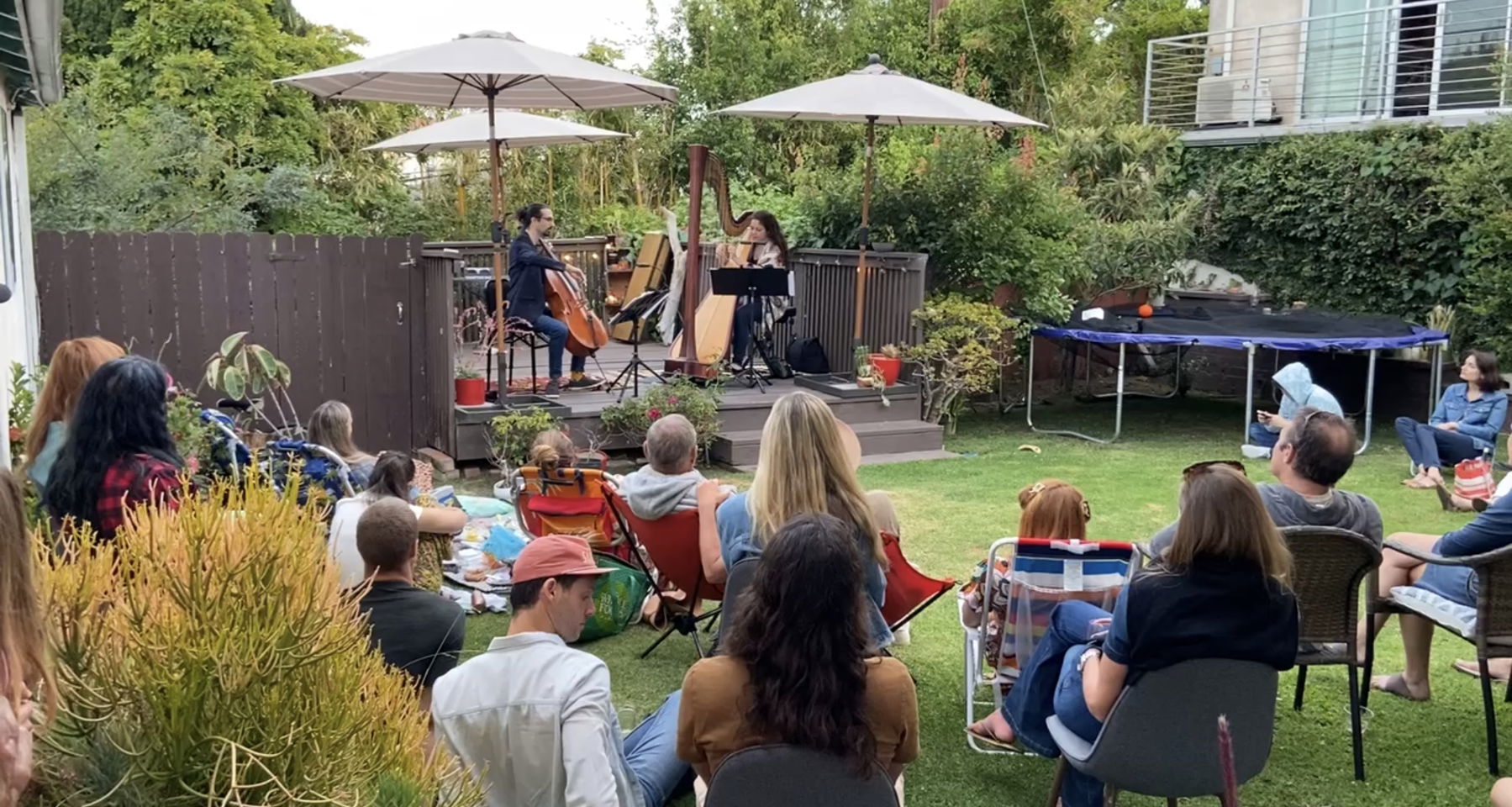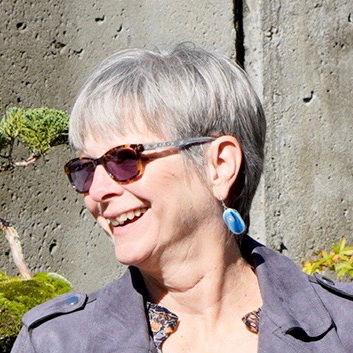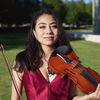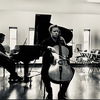
A Summer Night filled with the Warmth of Great Music and Friends Old & New
Los Cerritos, Long Beach
Sun, August 3, at 6:00 PM,
PDT
-
Capacity
- 24 of 30 spots still available
-

- Bring your own drinks
- Alcoholic and non-alcoholic drinks provided
-

- Dogs live here
-
Wheelchair access
- Wheelchair Accessible
-
- Some stairs may be present in the space
This is an outdoor groupmuse
A live in-person performance in a backyard or another outdoor space. They're casual and friendly, hosted by community members.
Host

Small and intimate musical performances are uniquely special. Perhaps even more so when held outdoors on a summer evening. Please join us in our backyard as we bask in the sounds of talented musicians and partake of small bites of food (please bring something to share). Come at 6:00 to grab something to eat and drink (wine and water will be provided), and to mingle with the other guests. The music will start at 6:30. And will last until 7:30 (or so). Stay after the performance to meet and talk with the musicians, and to continue connecting with fellow music lovers. Along with the wine and water, we will provide napkins, utensils, and paper plates.
What's the music?



Ludwig van Beethoven (1770–1827)
String Trio in G major, Op. 9 No. 1
I. Adagio – Allegro con brio
II. Adagio ma non tanto e cantabile
III. Scherzo: Allegro
IV. Presto
(Estimated Time: 26 minutes)
Ernő Dohnányi (1877–1960)
Serenade in C major, Op. 10
I. Marcia: Allegro
II. Romanza: Adagio non troppo
III. Scherzo: Vivace
IV. Tema con variazioni: Andante con moto
V. Rondo (Finale): Allegro vivace
(Estimated time: 24 minutes)
Where does this music come from?
Evening of String Trios
Program:
Ludwig van Beethoven (1770–1827)
String Trio in G major, Op. 9 No. 1
I. Adagio – Allegro con brio
II. Adagio ma non tanto e cantabile
III. Scherzo: Allegro
IV. Presto
Written in 1797–98, Beethoven’s Op. 9 String Trios represent a significant leap forward from the more decorative works of the Classical period. The Trio in G major is particularly striking for its symphonic ambition, dynamic contrasts, and dramatic gestures. In the first movement, a slow and suspenseful Adagio launches into a fiery Allegro con brio, foreshadowing the composer’s bold symphonic style. The second movement offers lyrical serenity and rich textures, while the Scherzo introduces a playful and unpredictable energy. The finale, a whirlwind Presto, displays Beethoven’s signature wit and precision. These trios were, at the time, Beethoven’s most serious chamber works—what he considered a prelude to the string quartet revolution he would soon begin.
Ernő Dohnányi (1877–1960)
Serenade in C major, Op. 10
I. Marcia: Allegro
II. Romanza: Adagio non troppo
III. Scherzo: Vivace
IV. Tema con variazioni: Andante con moto
V. Rondo (Finale): Allegro vivace
Composed in 1902, Dohnányi’s Serenade in C major is a brilliant homage to classical form infused with Hungarian flair and romantic warmth. The opening Marcia is stately yet humorous, setting the tone for a piece that gracefully blends tradition with innovation. A tender Romanza follows, with soaring melodic lines and intimate dialogue among the instruments. The Scherzo, rhythmically vivacious and full of harmonic surprise, leads into a set of thoughtful Variations that showcase the trio’s expressive range. The final Rondo sparkles with wit and rhythmic drive, bringing the serenade to a spirited and joyful close. A favorite of string trios, this work captures Dohnányi’s elegance, craftsmanship, and deep connection to both Viennese classicism and Hungarian musical traditions.
Location
Exact address sent to approved attendees via email.
This is an outdoor groupmuse
A live in-person performance in a backyard or another outdoor space. They're casual and friendly, hosted by community members.
Host

Attendees



 Continue with Facebook
Continue with Facebook
 Continue with Google
Continue with Google
 Continue with Apple
Continue with Apple
Comments (1)
Comment sections are only for participants. Please sign in and reserve a spot above to view comments.